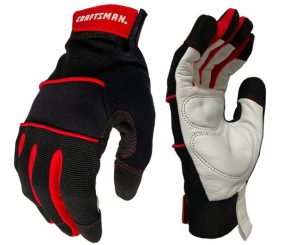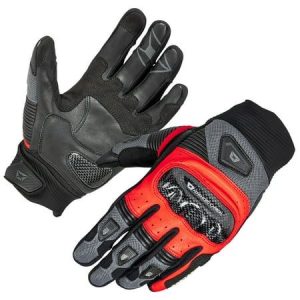How to Break In Your New Motorcycle Gloves for a Perfect Fit
So, you’ve invested in a brand new pair of motorcycle gloves – excellent choice! But before you hit the open road, there’s one crucial step: breaking them in. New motorcycle gloves, especially leather ones, can feel stiff and restrictive at first. This can hinder your grip, dexterity, and overall comfort on your ride.
Taking the time to properly break in your gloves makes a world of difference. Not only will they become more comfortable and mold to your hands, but they’ll also offer a better feel for your handlebars, improving control and safety.
This guide explores various methods for breaking in your new motorcycle gloves, offering valuable tips to ensure a smooth and successful process.
Understanding Why Breaking-In Matters
Motorcycle gloves are designed to prioritize protection. They use tough materials like leather or textiles to shield your hands from abrasions and impacts in case of an accident. However, this very strength comes at the cost of initial stiffness.

Breaking in your gloves addresses this by gradually softening the materials and conforming them to the unique shape of your hands. This results in several benefits:
- Enhanced Comfort: Stiff gloves can cause fatigue and discomfort during long rides. A proper break-in allows the gloves to flex more readily, reducing pressure points and creating a more natural fit.
- Improved Dexterity: Stiffness can limit your ability to manipulate the controls effectively. Breaking in your gloves allows for better finger movement and a more confident grip on the handlebars and levers.
- Increased Safety: A comfortable and well-fitting glove translates to better control of your motorcycle. This can significantly enhance your safety on the road.
Popular Techniques for Breaking In Your New Motorcycle Gloves
There are several methods for breaking in your motorcycle gloves, each with its own advantages and considerations. Here’s a breakdown of the most popular techniques:
-
Natural Wear and Ride: This is the simplest and most straightforward approach. Simply wear your gloves while riding your motorcycle. Over time, the natural flexing and movement of your hands will gradually break in the materials. This method can take longer, particularly for thicker leathers.
-
Warm Water Soak: This method involves soaking your gloves in warm (not hot) water for 10-15 minutes. This helps to soften the leather fibers and make them more pliable. After soaking, put on the damp gloves and wear them until they dry completely. Be aware that this method can slightly alter the fit of your gloves, so ensure they were snug to begin with.
-
Leather Conditioner: Leather conditioner is a great way to keep your gloves supple and prevent them from drying out. Applying a light coat of conditioner after the warm water soak or simply during the break-in period can help accelerate the softening process. However, avoid over-conditioning, as it can make the leather slippery.
-
Strategic Flexing: While not a substitute for actual riding or wear, strategic flexing can help soften specific areas of your gloves. This involves gently bending and manipulating the fingers, palm, and wrist sections. Avoid aggressive flexing, as this can damage the stitching or leather.
Additional Tips and Considerations for Effective Break-In
Here are some additional pointers to ensure a successful break-in process for your motorcycle gloves:

- Start with Short Rides: If your gloves are very stiff, begin with shorter rides to allow for gradual break-in. This will help prevent discomfort and potential blisters.
- Focus on Comfort: Don’t force the break-in process if it causes excessive pain or discomfort. Take breaks and adjust your riding posture if needed.
- Consider the Material: Different materials require slightly different break-in approaches. Leather gloves typically take longer to break in than textile gloves.
- Use Both Hands: Break in both gloves equally to ensure a uniform fit and feel.
Beyond Break-In: Maintaining Your New Motorcycle Gloves for Long-Lasting Comfort
Once your gloves are broken in, proper care and maintenance will ensure they stay comfortable and protective for years to come. Here are some key practices:
- Regular Cleaning: Clean your gloves periodically using a damp cloth and mild soap. Avoid harsh chemicals or detergents that can damage the leather.
- Conditioning: Apply a leather conditioner periodically (every few months) to keep the leather supple and prevent it from drying out.
- Storage: When not in use, store your gloves in a cool, dry place away from direct sunlight.
Finding the Perfect Fit: A Crucial Step Before Break-In
Here are some crucial points to remember when selecting motorcycle gloves to ensure a proper fit and minimize the need for extensive break-in:

-
Measure Your Hands: Most motorcycle glove manufacturers provide sizing charts based on hand measurements. Use a measuring tape to accurately measure your hand circumference and palm length to determine the correct size according to the specific brand’s chart.
-
Try Before You Buy: Whenever possible, try on the gloves before purchasing them. This allows you to assess the fit, feel the material’s stiffness, and ensure there are no pressure points. Move your hands around in the gloves, simulating gripping handlebars and operating controls. A snug fit with slight fingertip movement is ideal.
-
Consider Glove Types: Different types of motorcycle gloves cater to various riding styles and weather conditions. Touring gloves, for example, prioritize comfort and weatherproofing, while racing gloves offer a tighter, more performance-oriented fit. Understanding your riding needs will help you choose gloves with the appropriate level of flexibility and break-in requirements.
The Importance of Quality Materials: An Investment in Long-Term Comfort
The materials used in your motorcycle gloves significantly impact their comfort, performance, and break-in process. Here’s a breakdown of the most common materials:

-
Leather: High-quality leather gloves are renowned for their durability, protection, and ability to mold to your hands over time. However, they generally require a longer break-in period.
-
Textiles: Textile gloves, often constructed from synthetic materials like nylon or polyester, offer a more affordable option and typically require less break-in time. However, they may not provide the same level of abrasion resistance as leather.
-
Combination Materials: Many manufacturers combine leather and textile materials in their gloves. This offers a balance between protection, comfort, and break-in time.
When Professional Help Makes Sense: Tailoring for a Customized Fit
In some cases, even perfectly sized gloves might require slight adjustments to achieve an ideal fit. Here’s where a professional tailor can come in:

-
Leather Tailoring: Experienced leather tailors can make minor adjustments to your gloves, such as taking in the fingers or modifying the palm for a more tailored fit. This can significantly enhance comfort and dexterity, especially for riders with unique hand shapes.
-
Custom Gloves: For riders with particularly challenging hand sizes or specific needs, custom-made gloves can be an excellent option. While a more expensive investment upfront, custom gloves provide an unparalleled level of fit and comfort from the very first ride.
The Final Ride: Taking Comfort and Confidence to the Road
Breaking in your motorcycle gloves is a worthwhile investment in your riding experience. By following the tips and techniques outlined in this guide, you can ensure your gloves become an extension of your hands, offering superior comfort, control, and ultimately, increased safety on the road.
Remember, a comfortable and well-fitting glove translates to a more enjoyable ride. So, take the time to break in your new gloves properly, and get ready to experience the freedom and confidence of the open road with complete control at your fingertips.
